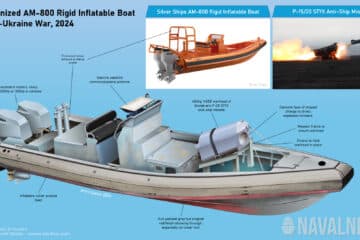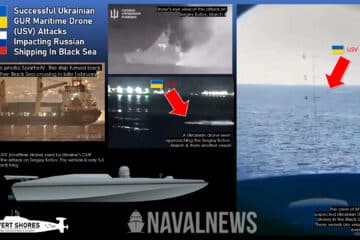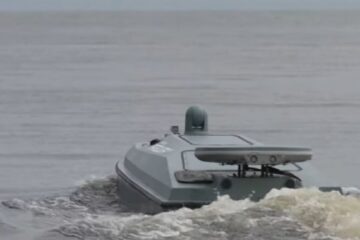By TASS Russian news agency
The first stage of its renewal is to be completed shortly. The Izvestia daily writes about the development of the fleet and the threats it would repel after rearmament.
The fleet had no future in Sevastopol under Ukrainian control. Kiev authorities barred any Russian attempt to renew the fleet deployed in Crimea. The Russian Navy had to take major effort to keep the fleet operational.
Russia invested a lot into a new base in Novorossiisk. The developments in 2014 changed the situation. The Black Sea fleet began to revive and renew the hardware and infrastructure. New units appeared. An inter-arm Russian force was created in Crimea in a brief time.
In the past years, the Black Sea fleet received six submarines, three project 11356 frigates and three project 21631 corvettes. They are all armed with Kalibr missiles. The fleet was also reinforced with two project 22160 corvettes and two minesweepers.

The Soviet Black Sea fleet mostly comprised warships built in Nikolaev, Kerch and Feodosiya. Russia built new warships at other shipyards. Now Zaliv in Kerch is back in business and is building corvettes. The Pavel Derzhavin of project 22160 will join the Black Sea fleet in 2020. It will be the first warship built by Zaliv in recent years and the first corvette for the Black Sea fleet built in Crimea. The fleet has restored its attack aviation and reinforced coastal missile troops.
Thus, the first stage of renewal has actually been completed. The fleet obtained numerous new warships and other hardware and created several new units.
Two Soviet-built warships had to be decommissioned in 2020. The Kerch is being scrapped in Severnaya Bay of Sevastopol and the Smetlivy escort ship is to become a museum. Its crew will serve on the Retivy corvette of project 20380.

During the second stage, the fleet will receive three new corvettes of projects 20380 and 20386. The Retivy has to join the fleet in 2020. The Strogy and the Mercury will follow. The latter is the first warship of project 20386. It is a new generation ship with a compartment for various combat modules. Project 20386 corvettes have to comprise the backbone of the Russian fleet.
The fleet is to get four project 22160 corvettes and up to 10 corvettes of projects 21631 and 22800 in the coming years. It will then receive several big warships, such as project 22350 frigates. The Black Sea fleet will get at least two frigates.
Russia restored its Mediterranean squadron in 2013 and revived Tartus naval base as it launched the operation in Syria. It helps the Russian Navy operate in the Mediterranean and Red Seas, the Atlantic and Indian Oceans.
The squadron comprised warships of all Russian fleets. Now the Black Sea fleet is its backbone. Previously, the fleet could demonstrate the flag in rare sorties to the Mediterranean Sea and hold limited but successful operations like the naval part of the brief war with Georgia in 2008. Now the fleet can constantly keep its forces in the Mediterranean and hold large-scale attack and landing operations.

The fleet currently has 12 carriers of Kalibr missiles and their number will double in the coming years. Kalibr missiles take the fleet to strategic deterrence positions against NATO in Southern, Southwestern and Central Europe. The carriers of the missiles can fire them at most military targets in the Black and Mediterranean Seas.
In Syria, the Russian Navy and the Black Sea fleet, in particular, obtained a unique experience of operations away from the national territory. The so-called Syrian Express was launched for supplies. It comprised landing and transport ships which sailed from Russia to Syria and back.
The Black Sea fleet is capable of underwater operations in the Mediterranean Sea. Two out of six submarines are constantly on duty in the Mediterranean squadron. After the Soviet collapse, Russian submarines rarely visited the region. Now they can permanently operate there from Tartus.
Thus, the Black Sea fleet has developed from a collection of Soviet-era warships into a modern combat force capable of a broad range of missions, the Izvestia said.
–End–






